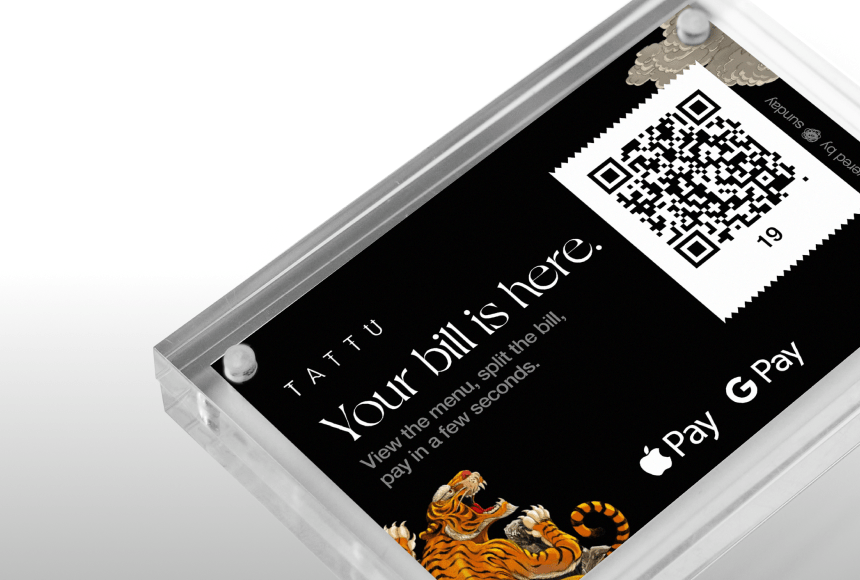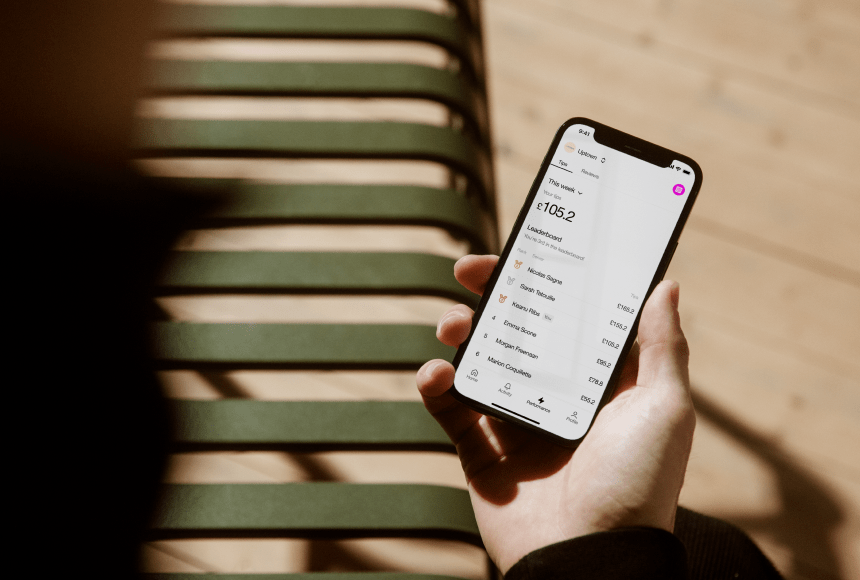
QR Code Payments: The Rising Star of the 2025 Payment Landscape
Breaking the Mould: How Payment Habits Have Evolved
Walk into a bustling UK café or restaurant in 2025, and you might notice something missing: the clunky, handheld card reader that used to do the rounds at every table. In its place, you’ll see discreet QR codes on tabletops or menus, ready to be scanned by a diner’s smartphone. Within seconds, the payment is done. It’s a striking image of how far we’ve come in just a few years.
We’ve transitioned from chip-and-PIN cards to contactless taps, and now from contactless to phone-based options. Increasingly, consumers crave speed and simplicity. Traditional card machines haven’t disappeared entirely, but they’re no longer the undisputed champion of transactions. This shift is fuelled by security improvements, changing consumer expectations, and the boom in smartphone usage across all demographics.
So how do these new technologies stack up, and why is the QR code leading the pack? Let’s explore the most popular payment methods in 2025 and discover why scanning a simple code is fast becoming a diner’s first choice.
Cash: Still Kicking, but Less Dominant
Cash used to be king — no question. However, by 2025, it holds a far smaller share of UK transactions than it did just five years ago. According to a UK Finance report (Payment Markets), cash usage has steadily declined, hovering around niche scenarios (like small street vendors or certain service tips).
Why the drop-off? Convenience is one major factor. People no longer want to fumble with notes and coins, especially when quick digital solutions exist. Plus, the pandemic years accelerated contact-free habits, making the convenience of cashless payments more attractive than ever. While a few diners might still carry coins for small purchases, it’s clear that cash is no longer the universal fallback it once was.
Debit and Credit Cards: Still Vital but Evolving
Plastic cards remain a favourite for millions of Brits. It’s an established habit: tapping or inserting a card is practically second nature. However, the conversation around card payments in 2025 is more nuanced:
- Contactless Rules: Chip-and-PIN is rarely used, as contactless limits have risen significantly. Cards that offer “tap and go” have become the everyday norm, prized for their speed and familiarity.
- Wearables and Mobile Wallets: Some card usage is invisible, in the form of Apple Pay, Google Pay, and wearable devices that link to your debit or credit account. These stand shoulder-to-shoulder with QR-based systems, offering quick, frictionless payments.
- Security Advances: Fraud protection and card-blocking apps are more sophisticated. If a consumer loses their physical card, they can freeze it instantly, limiting the risk. This enhanced security fosters ongoing trust in card payments.
Nonetheless, as widespread and trusted as card payments are, many businesses are shifting toward solutions that require even less hardware, leading us straight to the next big contender.
Mobile Wallets: Speed, Rewards, and Beyond
Mobile wallets like Apple Pay and Google Pay have grown leaps and bounds. A Guardian article (Money section) highlighted that over half of UK smartphone owners now regularly use a mobile wallet for day-to-day transactions, a statistic that’s up drastically from early 2020s levels. And the reasons are simple:
- Speed and Simplicity: No rummaging for a wallet, no card insertion. Just unlock your phone and tap.
- Rewards Integration: Some wallets tie directly to loyalty schemes, automatically tracking points or offering instant cashback. For a diner, paying with their phone can mean collecting or redeeming rewards in seconds.
- Reduced Physical Contact: Contactless is contactless — whether it’s a card or a phone. But phone-based payments require no additional hardware besides a payment terminal or a quick scan.
But as efficient as these wallets are, they often rely on NFC terminals (Near Field Communication) — the same technology that powers contactless card taps. Not every smaller establishment invests in NFC hardware, so while adoption is broad, there’s still an opening for QR codes to shine where NFC coverage might be incomplete.
Bank Transfers and Online Platforms
We can’t skip over the rise in direct bank transfers and online payment platforms. Services that link directly to one’s bank account, such as PayPal, also remain relevant. For instance, some diners prefer to pay with a direct account transfer if they’re splitting a large group bill, or if they’re dealing with a restaurant that primarily operates online for delivery or takeaway.
Even in 2025, these methods typically revolve around user accounts or custom apps. They can be quick once set up, but they often carry friction for first-time users who have to create accounts or navigate unfamiliar interfaces. That’s why they don’t necessarily hold the top spot in everyday dining transactions, though they remain a useful option in certain scenarios or for specific customer segments.
QR Codes: The Surprise Front-Runner
So, why do QR codes stand out in 2025 among all these other options? Let’s break down the appeal:
- Minimal Hardware Needed: A smartphone and a printed code are enough. Restaurants don’t have to invest in new payment terminals or rely on the functionality of older ones. This simple setup lowers operational costs and reduces reliance on a card machine’s availability.
- Instant Access to Menus and Bills: Beyond payments, a QR code can link to a digital menu, let diners customise orders, or view running totals. It gives customers more control and transparency, often in the same place they pay.
- Adaptability: Whether a customer wants to pay with Apple Pay, a stored card, or an e-wallet, the QR code interface can unify these options. It’s a flexible gateway, not a single payment method on its own.
- Familiarity Post-2020s: Once considered niche, scanning codes became second nature after years of contactless mania. Everyone from teens to grandparents can do it with ease. This acceptance has spilled over into 2025, making QR-based payment flows feel normal and intuitive.
Let’s not forget a key advantage for restaurants: the chance to integrate tipping and feedback prompts in the same flow. A diner scans, sees their total, adds a tip with one tap, and can be gently invited to leave a Google review. Solutions like Sunday have shown how neatly these steps can be woven together.
Customer Experience: Where QR Codes Take the Crown
For a restaurant owner, it’s not just about adopting a flashy new system; it’s about making customers happy. QR code payments score well in that department:
- Faster Checkouts: No queuing at the counter or waiting for a server to bring the card machine. Customers settle up when they’re ready, cutting down friction during busy service times.
- Interactive and Informative: A code can deliver more than just a payment screen. Diners might view allergy info or wine pairing suggestions, all before tapping ‘Pay.’
- Personal Touch: Freed from the drudgery of scanning cards, servers can focus on hospitality — checking satisfaction, introducing daily specials, or making conversation. Technology is an enabler of better people skills, not a replacement for them.
With so many complementary benefits, it’s clear why QR code payments aren’t just a fad. They provide a frictionless way to finish a meal and a modern digital link between the restaurant’s brand and the diner’s smartphone.
Tackling Security Concerns Head-On
Naturally, any discussion of digital payments must address security. Are QR codes safe? It depends on the system behind them. Reputable platforms encrypt data and ensure that the restaurant’s or diner’s sensitive information isn’t compromised.
Because the diner handles payment on their own device, the risk of card skimming is significantly reduced. As long as the QR code is legitimate (not tampered with) and directs to a secure payment gateway, the transaction can be as safe — or safer — than handing over a physical card.
For restaurants, it’s about choosing a reputable solution, verifying the code’s integrity, and communicating that to customers. If diners know you’ve chosen a well-established platform that invests in robust security, they’ll confidently adapt to the new process.
Adopting QR Code Payments in Your Restaurant
Intrigued by the potential of QR codes? Here’s how you can smoothly integrate them into your establishment:
- Choose a Trusted Provider:Not all QR solutions are equal. Look for one that offers encryption, easy setup, and good user reviews. Some, like Sunday, are designed specifically with hospitality in mind, blending speed and a frictionless tip and review feature.
- Set Clear Signage:The best system in the world won’t help if diners don’t know it exists. Place table displays or small stand-up cards with a concise, polite prompt: “Scan here to pay and tip instantly.” Keep the instructions short and sweet.
- Train Your Team:Staff should be ready to answer questions, especially from first-time users. They might show a guest how to open their camera app and centre on the code. Once they’ve done it, that’s usually all it takes to get comfortable.
- Offer a Fallback:Some guests still prefer tapping a card or paying cash. Provide alternative methods to keep all customers happy. Over time, you’ll probably see a majority migrating naturally to the QR code path.
- Monitor Results:Keep an eye on speed, tip amounts, and feedback. If you see higher table turnover, better tips, or more frequent positive reviews, you’ll know the system is paying off.
A well-executed rollout helps diners embrace the change. It also ensures staff remain confident in guiding them, which makes the entire experience feel polished and well-thought-out.
Finding the Balance: Embracing Tech without Losing the Human Touch
One worry for restaurant owners is whether digital payments threaten the personal connection between staff and guests. The truth? They can enrich it, provided you frame technology as a helpful addition, not a barrier.
- Less Time on Logistics: Servers aren’t spending those last five minutes of a meal waiting for a card machine to free up. Instead, they can engage in genuine conversation or handle any final requests.
- Informed Recommendations: Freed from grunt work, servers can talk about the house special, the story behind your new craft beer, or how a dessert is sourced from a local bakery. Quality of service often goes up, not down.
- Tech as Empowerment: Younger staff especially may feel more in sync with a system that uses technology. They’re comfortable with a phone-based culture, which can also boost morale.
Ultimately, the user-friendly nature of QR payments enhances your brand’s vibe as forward-thinking and customer-centric, without erasing the hospitality that people love about dining out.
The Road Ahead: Where Do We Go from Here?
In the near future, we’re likely to see deeper integrations with loyalty programmes, analytics, and even augmented reality menus. The lines between ordering, paying, and reviewing may blur further, giving customers an immersive, personalised experience.
QR codes stand out as a flexible gateway. While contactless cards and mobile wallets remain important, the ease of scanning a code can unify multiple payment types into one neat digital interface. That’s precisely why so many restaurants are pivoting to it — it fits well with evolving consumer tastes and the rapid growth in smartphone capability.
Moreover, as security and app capabilities expand, the QR payment method might morph into entire digital ecosystems: scanning a single code could let you chat with a server remotely, request a wine recommendation, settle the bill, and even reorder an item for takeaway at a discount.
Embrace the Shift for a Competitive Edge
While it’s tempting to see these innovations as passing trends, the numbers tell a different story. Cash is declining, plastic cards are standard but no longer surprising, and phone-based payment has soared in acceptance. QR codes fill a unique gap: easy for businesses, flexible for customers, and powerful enough to handle everything from itemised bills to quick tipping.
For restaurant owners, the takeaway is clear. If you want to stay ahead of the curve, adopting a QR payment option shows your guests you’re on top of contemporary dining needs. This is especially true if you pair it with a well-designed digital menu or a streamlined system that merges ordering, paying, and tipping all in one place.
In a competitive restaurant scene, offering an effortless checkout can be that crucial final flourish that leaves a positive impression. Diners appreciate not having to chase servers for the bill. Staff appreciate fewer repetitive tasks. And you, as the owner, get better insights and possibly higher revenue through quicker table turnover and integrated upsells.
So, as we stride confidently into 2025, it’s time to recognise that payment options are more than just operational choices: they’re a key part of your brand experience. Whether you run a cosy neighbourhood bistro or a high-traffic pub, embracing QR code technology could be a simple, cost-effective way to make sure your customers leave with a smile — and maybe even an extra tip. Because in the new era of dining, convenience and connection go hand in hand.
Find out more today
Drop us your details below and we’ll reach out within the next 24
“Bill please” is a thing of the past.
With our integrated QR codes your customers pay in seconds, straight from their table.


